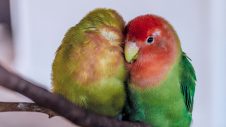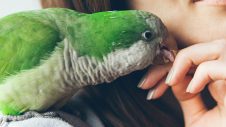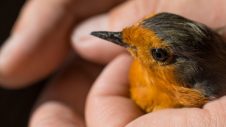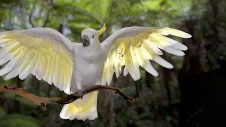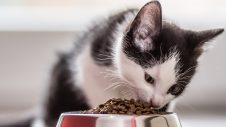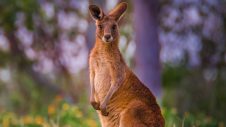Finding any wounded animal can be distressing, especially if you are not equipped with the right knowledge to help it. Wounded birds are commonly seen for a range of reasons including being hit by cars or getting into fights with other birds. This guide explains what to do with an injured bird, including first aid priorities and treatment recommendations.
First Aid Priorities
The first step to consider when looking to help an injured bird is assessing for risk to yourself. Identify the risks around, such as traffic and other animals, and be sure it is safe to attend the bird, then assess the bird itself Ie whether the bird is potentially dangerous and protect yourself. For example; if it is a bird of prey, the talons and beak are dangerous so wrapping the feet together with a towel to protect yourself is important, birds with long pointed bills can peck quite aggressively and eye and other injuries can happen if you aren’t careful, large birds, such as swans and pelicans, can flap their wings hard enough to cause injury so controlling the bird safely is important before providing first aid. Once you are happy the bird cannot injure you and you are safe, we move on to basic first aid.
Birds are sensitive creatures in and being wild, lots of handling from people can cause a significant amount of stress to them. This stress can be enough to cause them to go into shock, so we want to keep handling to a minimum and try to keep them in a dark, quiet environment as much as possible.
Stop Bleeding
Examine the bird briefly and stop any bleeding. Bleeding can be stopped by placing some clean cloth (not towelling) over the wound and apply firm pressure for about 5 minutes. Be careful not to restrict the bird’s breathing if the wound is on the body as they are often small birds found and it does not take a lot of pressure to impact their ability to breath. Carefully remove the cloth to ensure that bleeding has stopped. Do not wipe the area or remove any blood clots, as this could cause bleeding to start again.
Treat for Shock
Birds that are in shock appear weak, unresponsive, fluffed up and breathe in slowly and out quickly. Place the bird in a quiet, semi-dark, warm, humid environment. Warmth is essential in getting birds through a state of shock – temperature should be between 25 and 30 degrees. Place a clean cloth or some newspaper in the bottom, which is laid out flat. A hot water bottle can be filled with hot water from the tap and wrapped in a cloth, which is placed near the bird.
If you can get the bird to a vet at this stage this is best and will provide the best outcome, but if you have found it later at night or far from a vet and need to look after it for longer see below. It is always better to seek veterinary care for wild birds, as they have special needs and when injured often need medical attention only able to be provided at a veterinary clinic. Keeping wildlife is illegal in Australia without appropriate wildlife carer licensing and wild birds often do not do well in captivity unless started very young, so please organise transport to a vet clinic as soon as possible after finding injured wildlife.
The bird will generally take 4 to 6 hours to recover from shock if there are no other major medical issues or injuries sustained – if it doesn’t – seek advice. While the bird is in shock, don’t force it to eat or drink.
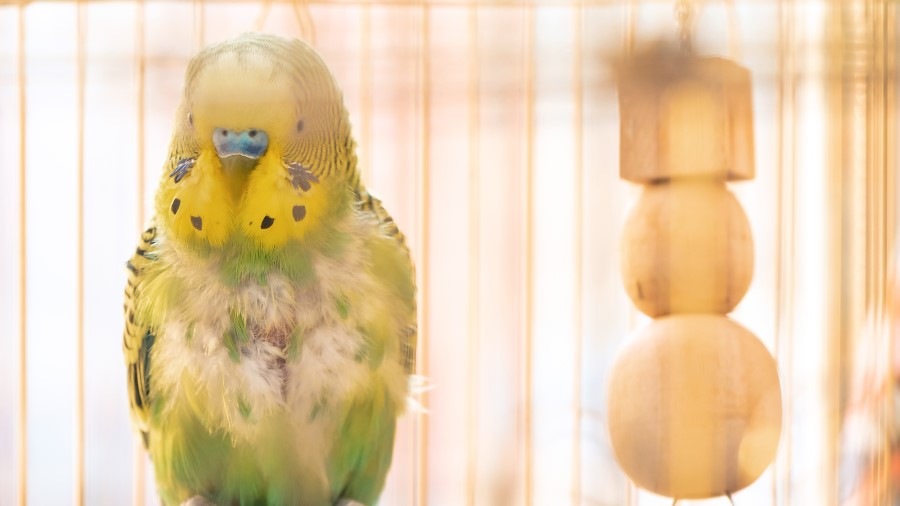
When the Bird has recovered from Shock
Gathering all the information you can about the bird’s condition is beneficial for understanding what may have happened, particularly if you need to call a vet.
Visually examine the bird
Stand a short distance away and examine the bird visually. Look for any deformity, unusual wing positions or lameness. Note the following:
- Eyes – should be both open and bright. Pupils should be equal in size. Unequal pupil size may indicate head trauma. If the eyes are partly closed then the bird is unwell. One eye closed may mean an injury or infection. Check to see if the bird responds to the movement of your hand.
- Head – head nodding, head tilting and periods of eye closing can indicate severe illness or trauma.
- Breathing – a healthy bird’s breathing is hard to detect. Laboured breathing may mean possible respiratory infection or internal trauma.
- Feathers – missing feathers may indicate an underlying wound. Feathers fluffed out can mean the bird is unwell and trying to warm itself.
- Posture – birds that are weak will sit. A healthy bird will sit only to sleep.
- Legs – Leg paralysis can be caused by toxicities, infectious diseases, trauma to the head or spine, or fractures in the back, legs or pelvis. Abnormalangulation of a leg can indicate fracture of the leg or pelvis or dislocations.
- Wings – Wings should be similar in the way they hang. A drooping wing can indicate a fracture. A broken wing can be immobilised by taping the wing in its natural folded position (not too tightly so as to restrict breathing). Micropore tape or vet rap tape doesn’t stick to the feathers. There is a figure 8 bandage technique to doing this well and holding the wing in the best position but if you are not confident doing this or the bird is very stressed it is better to leave it and get it to a vet asap. If the bird has obvious injuries such as mentioned here, then seek veterinary advice.
Physically examine the bird
Begin by examining the head and check for any sign of eye injury, abrasions, beak injury etc. Check the neck feathers for feather loss or matting which may indicate a wound. Feel the body, paying attention to the breast (keel) bone and breast (pectoral) muscles. If the breastbone is prominent and the muscles feel sunken, starvation, parasites such as worms, or a chronic illness may be indicated. Examine each wing. Gently hold the wing tip and pull it away from the body, so the bones and joints can be felt for fractures or dislocations. Examine each of the legs for fractures. The bones in the legs are easier to feel if the leg is extended.
Cuts and Wounds
If you do find cuts or wounds on an injured bird, it’s important you know how to treat them. Cuts and wounds can be gently cleaned with a solution of warm salt water (1 teaspoon of salt to 1 cup of water) or sodium chloride/saline. Don’t remove any clots of blood as this can start the bleeding again. If a cat or dog has injured the bird, veterinary assistance should be obtained as to the need for antibiotics. The bacteria in cats and dogs mouths can cause severe infection, so the bird may die in a few days, if not sooner from an actual puncture wound to one of the organs.
First Aid Kit
A few things you can consider getting as a standard first aid kit:-
- 1 roll micropore – ½ inch or 1 inch or Vetwrap for taping wings
- 1 roll sticky taped used for taping snapping beaks when examining birds
- 1 bottle of saline/sodium chloride for use on open wounds.
Special Note: Avoid the use of antiseptic cream or ointment, as they can contaminate the feathers and cause excessive preening or self-mutilation
Treating An Injured Bird FAQs
How to help an injured bird
Helping an injured bird is about ensuring they feel safe and taken care of. The most important first steps when helping an injured bird are removing them from a situation that could cause them further harm, stopping any bleeding and treating them for shock.
What are the symptoms of a bird in shock?
If you have found an injured bird and suspect they are still in shock, there are a few symptoms you can look out for. Typically, birds in shock will have irregular breathing patterns, ruffled feathers and appear weak or unresponsive.
Should I give an injured bird water?
Never squirt water down a bird’s throat. This may result in the bird inhaling the liquid into the lungs. Use an eyedropper placed near the side of the bird’s mouth and let the bird swallow the drops slowly. Don’t put a new bird with birds that you may already have caged – disease is easily transmitted. If you have a sick bird, keep them isolated and clean the cage thoroughly with disinfectant after use. Always wash your hands after handling a bird and before you handle another bird.
What to do with an injured bird in my yard
If you find an injured bird in your yard it is important to keep them away from any animals that could harm them and if you can, bring them inside. From there you should stop any bleeding and examine the bird for additional injuries. If you can, wrap them in a warm towel to offset the shock and place them in a well ventilated box. After this you can contact your vet or nearest animal emergency hospital to inform them of the bird’s condition, should it be badly injured and need additional assistance.
What to do with an injured baby bird
Similar to if you find any injured bird, you should be careful with the baby bird and if you can, bring it inside out of harm’s way. Try to minimise the noise around it and keep it away from children and pets. Assess the baby bird for any bleeding or obvious injuries, stop the bleeding if there is some, then wrap the baby bird in a warm towel and place them in a ventilated box out of harm’s way. After this, call your local vet or animal emergency hospital for further assistance on helping the bird.
Who can help an injured bird?
Although vets are always the preferred care provider for injured wild animals due to their expertise and resources, anyone can help an injured bird in the early stages of their care provided they understand how to help. Keep the bird calm, be sure to stop any bleeding and then keep them comfortable as you contact a nearby vet or animal hospital depending on the severity of their injuries.
Can I take an injured bird to the vet?
If you are unsure if your local vet can treat an injured bird, we recommend calling the vet prior to transporting the bird, to ensure they are best suited to treat the injured bird.

 Greencross Vets
Greencross Vets 
